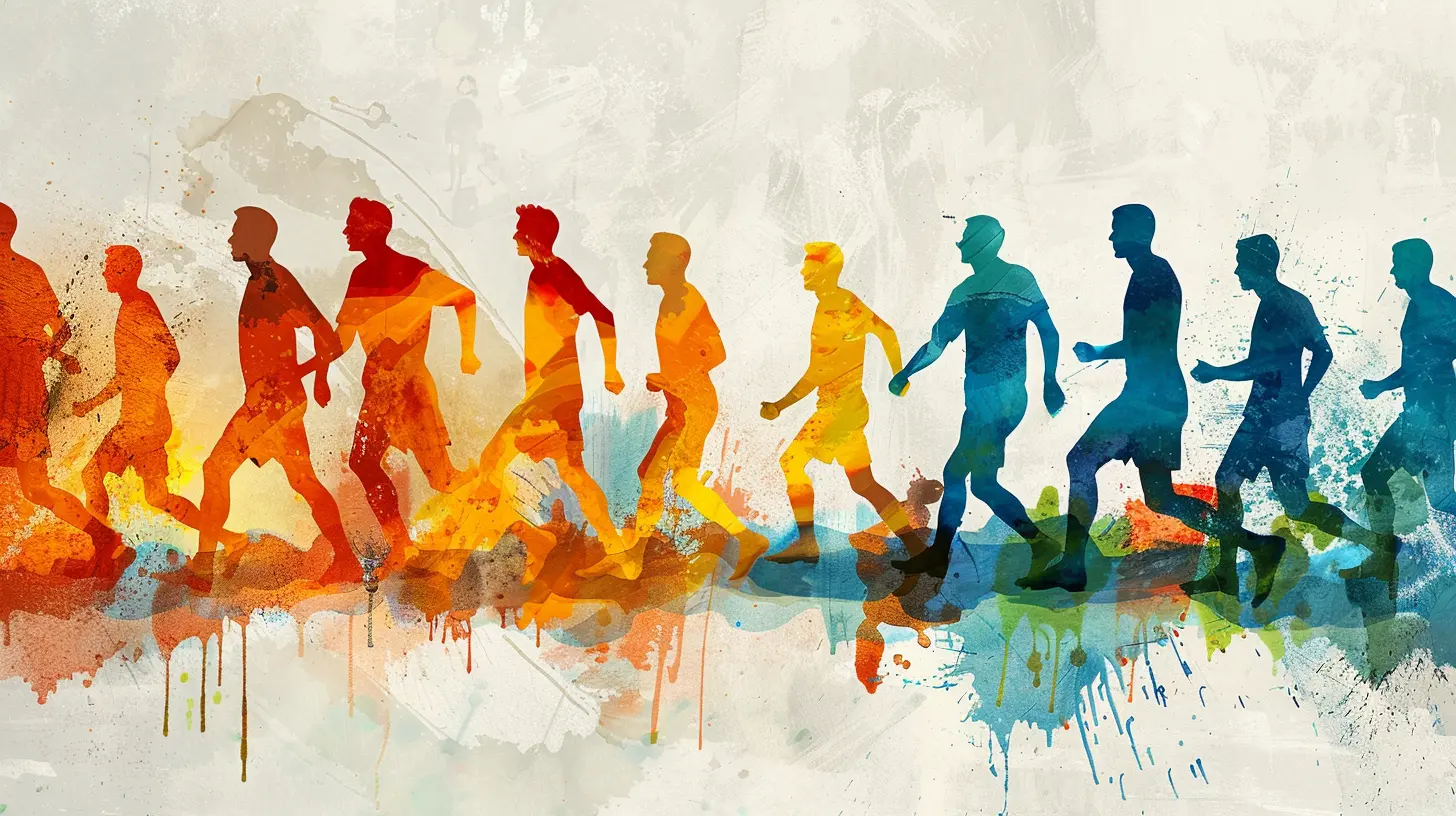Coaching Across Generations: Bridging the Gap Between Old and New
15 August 2025
Let’s be honest—coaching today is kind of like trying to teach your grandpa how to TikTok. The fundamentals are still there, but the style, the vibe, and even the lingo? Totally different ballgame.
We're living in a wild era where high school kids have highlight reels on Instagram before they even pass driver's ed, and legendary coaches who once ruled the VHS tape are scratching their heads at these newfangled analytics and digital playbooks.
So how do you, as a coach (or maybe just a curious fan), bridge that yawning generational gap? Can the old-school grit of yesteryear coexist with the flashy, high-speed, data-driven world of today’s sports landscape?
You bet your whistle it can.
Let’s dive into this mess of mesh shorts, iPads, and hard-earned wisdom, and figure out how coaching across generations can work—not just without friction, but with flair.
Different Eras, Same Game: Where It All Begins
Here’s the thing. Whether you were coaching barefoot on a dusty field in the ’70s or you’re pulling up YouTube drills on your iPad today, one thing hasn’t changed: the love of the game.Sports unite people. Doesn’t matter if you're running suicides in Converse high-tops or monitoring split-second metrics through wearable tech—athletes want one thing: to win (and maybe look good doing it).
But here’s where it gets tricky—each generation brings a different attitude to the table.
Old-School Coaches: The “Back In My Day” Legends
You’ve seen them. Probably been coached by one. These folks ran on pure grit, sweat, and an iron will.They’re the type who used words like “mental toughness” before it had a hashtag, and could spot a slouch from 50 yards away. They believe in earning respect, not demanding it. And cardio? If you weren’t puking by the end of practice, you didn’t try hard enough.
Strengths:
- Discipline
- Simplicity in strategy
- Unyielding work ethic
- Strong team culture
Weaknesses:
- Resistance to change
- Tough time relating to younger athletes
- "My way or the highway" vibes
New-School Coaches: The Tech-Savvy Energy Boosters
They’re the ones with Apple Watches, spreadsheets for player stats, and team chats that include way too many emojis. They know what Twitch is, and they’re not afraid to use words like “mental health” and “self-care” without rolling their eyes.They’re data-heavy, extremely analytical, and genuinely care if their athletes feel heard. And for better or worse, some of them are younger than the socks old-school coaches wear to mow the lawn.
Strengths:
- Embrace technology and innovation
- Focus on athlete well-being
- Collaborative leadership style
- Open to feedback (yes, even from players!)
Weaknesses:
- Can overcomplicate strategy
- May rely too much on data
- Sometimes struggle with instilling discipline
Why the Gap Exists (Spoiler: It’s Not Just Technology)
It’s easy to blame this generational divide on tech. Sure, tablets and smartwatches play a role, but the real difference boils down to mindset.Back then, it was about “tough love.” Now, it’s more about “tough empathy.”
Athletes today grew up in a world of instant feedback—likes, comments, Snap scores. They’re used to being seen and heard. That’s not a bad thing—it’s just different.
For coaches who came up the hard-knocks way, adapting to this softer, more communicative approach can be like teaching a cat to fetch.
But here’s the kicker—bridging this gap isn’t about choosing one over the other. It’s about melding the best of both worlds.
Communication: The Ultimate Equalizer
You can’t build a bridge without a foundation, and in sports, that foundation is communication.Speak Their Language
No, you don’t have to memorize Urban Dictionary or start saying “no cap” in team huddles (please don’t). But understanding how younger athletes communicate—and more importantly, how they prefer to be communicated with—can be a game-changer.- Some athletes thrive with a direct approach.
- Others need a bit more encouragement and explanation.
- Ask questions like: “How do you like receiving feedback?” or “What motivates you?”
Treat them like people, not just players.
Give Respect, Get Respect
Gone are the days when “Because I said so” was the golden rule. Athletes want to know why. Why are we doing this drill? Why are we changing the playbook? Why can’t we have Taco Bell after practice?They’re not questioning your authority—they’re engaging with it.
Let them feel like part of the process, and you’ll build trust faster than you can say, “Suicides for everyone!”
Blending Coaching Styles: The Secret Sauce
Spoiler alert—some of the best coaches today mix the old with the new, like a vintage jersey with fresh Nikes.Keep the Old-School Discipline
Hard work never goes out of style. Athletes still need accountability, structure, and someone who’s not afraid to call them out when they half-speed it through a drill.Bring that structured, no-nonsense energy—but pair it with…
Embrace the New-School Tools
If you're still drawing up plays on a whiteboard when the team’s already seen them on Hudl three days ago, you’re behind. Tech isn’t the enemy—it’s a cheat code.Use video analysis.
Break down data to communicate improvement.
Use fitness trackers and performance metrics.
You have access to stuff Vince Lombardi would’ve dreamed about. Use it.
Balance Empathy with Expectation
Empathy doesn’t mean babying. It means understanding what your athletes are going through and knowing when to push vs. when to pull back.Think of it like coaching a garden—you gotta water it, but sometimes you need to pull a few weeds.
Real-Life Examples: Coaching Across Generations That Worked
Let’s take a peek at some real-world scenarios of this generational mashup at its finest.Coach Popovich (San Antonio Spurs)
He’s been around longer than most iPhones, but that hasn’t stopped him from connecting with each new wave of players. He keeps that old-school fire but matches it with deep care for his athletes' off-court lives. The result? Respect, loyalty, championships.Sean McVay (Los Angeles Rams)
Youngest head coach in NFL history and already has a Super Bowl win under his hoodie. Why? Because he’s not afraid to use analytics, trust his staff, and still keep that locker-room fire alive.Common Pitfalls to Avoid When Coaching Multiple Generations
Okay, so you’re on board—awesome. But watch out for these buzzkills:Don’t Play the Comparison Game
Avoid the “Back in my day…” speech. It usually ends with eye-rolls. It’s not helpful, and honestly, it kind of makes you sound ancient. Instead, focus on how the current game requires new tools and timeless traits.Don’t Ignore the Personal Stuff
Today’s athletes want to know you care. Mental health isn’t a buzzword—it’s part of peak performance. Yes, even your tough-as-nails starting linebacker might need help managing stress. A little compassion goes a long way.Don’t Be the Control Freak
You are the coach, not a dictator. Collaboration breeds buy-in. Involve your athletes in goal setting or film breakdowns—even strategy meetings. Ownership leads to effort.Tips for Coaches: How to Master the Generational Balancing Act
1. Stay Curious – Ask questions. Learn new tools. Growth is a two-way street.2. Keep Learning – Go to clinics, watch webinars, read books written after 1980.
3. Build Connections – Take interest in players' lives. Know their “why.”
4. Be Willing to Adapt – If your strategy worked in 1992, that’s awesome. But ask yourself: “Is it still working now?”
5. Make Feedback a Two-Way Street – Ask for feedback too. Scary? Maybe. Worth it? Definitely.
The Takeaway? Blend, Don’t Battle.
At the end of the sweaty day, the best coaches aren’t stuck in the past or blindly chasing the future. They’re the ones who grab the wisdom of the old and the innovation of the new and create something powerful—a coaching style that’s timeless and timely.Whether you’re old-school, new-school, or somewhere in-between—remember: It’s not about which generation’s “right.” It’s about coaching humans, growing athletes, and building teams that know how to hustle hard and hug harder (yes, both are allowed now).
So grab that clipboard—or your tablet—and get to teaching, learning, and bridging that gap like the rock star coach you are.
The locker room’s big enough for everyone.
all images in this post were generated using AI tools
Category:
Coach ProfilesAuthor:

Easton Simmons
Discussion
rate this article
1 comments
Beau McKay
Understanding fosters unity; let's embrace change!
September 10, 2025 at 2:44 AM

Easton Simmons
Thank you! Embracing understanding and change is essential for effective intergenerational coaching. Together, we can bridge gaps and create a more unified approach.


